Papers by Monica Hărșan

"Abstract: The present study aims at proving that the French writer Boris Vian –... more "Abstract: The present study aims at proving that the French writer Boris Vian – who was also a gifted trumpet player in a jazz band – built his fiction, and especially his famous novel “L’Écume des jours” (Froth on the Daydream), using the same principles and techniques that he employed in composing and interpreting his music. Jazz was considered, at the time, an experimental music: it was abstract and symbolical; it had a playful side and a great part of sophisticated improvisation. And so is Vian’s writing: it uses the polyphonic composition, the counterpoint technique, the syncope, the artificial and illogical changes of rhythms and themes; just like jazz, this fiction admits everything that goes against the classic system and its rigorous rules. We can assert that, during Modernism, there are no pertinent differences between arts, and they all echo and respond to each other, on the principle of Baudelaire’s “correspondences”. "
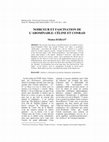
The present issue draws a parallel between two modern writers, Louis-Ferdinand Celine and Joseph ... more The present issue draws a parallel between two modern writers, Louis-Ferdinand Celine and Joseph Conrad, who share a pessimistic "philosophy" concerning the human race and its relation to a godless Universe. In their respective novels, "Voyage au bout de la nuit" ("Journey at the end of the night") and "Heart of Darkness", they both depict a world whose main feature is the utmost "darkness"/"noirceur", and show that Mankind's eternal vices (greed, cruelty, will to dominate the World, lack of empathy for the other etc.) have led to sad epiphenomena such as poverty, dehumanisation, moral and material decay. Both writers highlight (directly or allusively) the deep scars left on the black skins and black soil of Africa by the "benefits" of colonialism; but, at the same time, they both mock the "bad habits" of the Natives, such as cannibalism (Conrad) or moral decay (Celine). Both authors portray a non-fl...
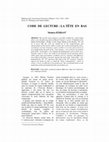
Bulletin of the Transilvania University of Braşov Vol, 2010
The present issue proposes a possible reading key, which might allow a new deciphering mode of Mi... more The present issue proposes a possible reading key, which might allow a new deciphering mode of Michel Tournier's novel « Vendredi ou les limbes du Pacifique » (Friday or the Virgin Islands of the Pacific). We will try to prove that the code one should use in the comprehension and interpretation of this bizarre author is myth, but a myth turned upside down, overturned, reversed. Tournier's goal is neither to rewrite and reinvest of new significations the myth of the « bon sauvage », nor to destroy the modern myth of the « homo faber »; by changing the fundamental vectors of the story, Tournier wants to 'force' his reader to ask himself several questions and to reflect upon some post-modern problems such as: tolerance and difference (according to Derrida's concepts). Against the myth of the 'homo faber', who dominated the 18 th , 19 th and more than half of the 20 th centuries, Tournier opposes the model of what we called the 'homo contemplativus', which, of course, is never as efficient as his predecessor, but corresponds better to the aspirations of the post-industrial and post-modern era.
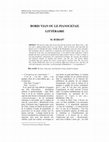
Bulletin of the Transilvania University of Brasov • Vol. 5 (54). No.1 - 2012 Series IV: Philology and Cultural Studies
Abstract: The present study aims at proving that the French writer Boris Vian – who was also a g... more Abstract: The present study aims at proving that the French writer Boris Vian – who was also a gifted trumpet player in a jazz band – built his fiction, and especially his famous novel “L’Écume des jours” (Froth on the Daydream), using the same principles
and techniques that he employed in composing and interpreting his music. Jazz was considered, at the time, an experimental music: it was abstract and symbolical; it had a playful side and a great part of sophisticated improvisation. And so is Vian’s writing: it uses the polyphonic composition, the counterpoint technique, the syncope, the artificial and illogical changes of rhythms and themes; just like jazz, this fiction admits everything that goes against the classic system and its rigorous rules. We can assert
that, during Modernism, there are no pertinent differences between arts, and they all echo and respond to each other, on the principle of Baudelaire’s “correspondences”.
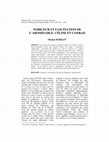
Bulletin of the Transilvania University of Brasov Series IV: Philology and Cultural Studies • Vol. 4 (53) No.1 - 2011
Abstract: The present issue draws a parallel between two modern writers, Louis-Ferdinand Céline a... more Abstract: The present issue draws a parallel between two modern writers, Louis-Ferdinand Céline and Joseph Conrad, who share a pessimistic ”philosophy” concerning the human race and its relation to a godless Universe. In their respective novels, “Voyage au bout de la nuit” (“Journey at the end of the night”) and “Heart of Darkness”, they both depict a world whose main feature is the utmost “darkness”/”noirceur”, and show that Mankind’s eternal vices (greed, cruelty, will to dominate the World, lack of empathy for the other etc.) have led to sad epiphenomena such as poverty,
dehumanisation, moral and material decay. Both writers highlight (directly or allusively) the deep scars left on the black skins and black soil of Africa by the “benefits” of colonialism; but, at the same time, they both mock the “bad habits” of the Natives, such as cannibalism (Conrad) or moral decay (Céline). Both authors portray a non-flattering image of the human race.
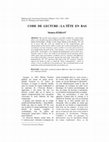
Bulletin of the Transilvania University of Brașov • Vol. 3 (52) – 2010 Series IV: Philology and Cultural Studies
The present issue proposes a possible reading key, which might
allow a new deciphering mode of M... more The present issue proposes a possible reading key, which might
allow a new deciphering mode of Michel Tournier’s novel « Vendredi ou les limbes du Pacifique » (Friday or the Virgin Islands of the Pacific). We will try to prove that the code one should use in the comprehension and interpretation of this bizarre author is myth, but a myth turned upside down, overturned, reversed. Tournier’s goal is neither to re-write and re-invest of new significations the myth of the « bon sauvage », nor to destroy the modern myth of the « homo faber »; by changing the fundamental vectors of the story, Tournier wants to ‘force’ his reader to ask himself several questions and to reflect upon some post-modern problems such as: tolerance and difference (according to Derrida’s concepts). Against the myth of the ‘homo faber’, who dominated the 18th, 19th and more than half of the 20th centuries, Tournier
opposes the model of what we called the ‘homo contemplativus’, which, of course, is never as efficient as his predecessor, but corresponds better to the aspirations of the post-industrial and post-modern era.
Conference Presentations by Monica Hărșan
This is a work about the myth of Orpheus and Eurydice with: Jean Cocteau, Jean Anouilh and Tennes... more This is a work about the myth of Orpheus and Eurydice with: Jean Cocteau, Jean Anouilh and Tennessee Williams.






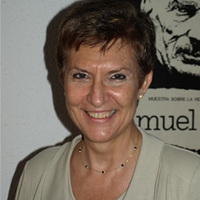
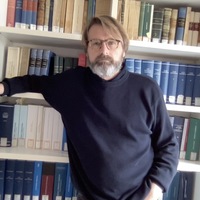


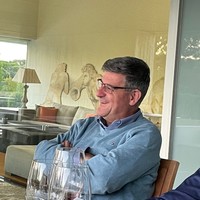
Uploads
Papers by Monica Hărșan
and techniques that he employed in composing and interpreting his music. Jazz was considered, at the time, an experimental music: it was abstract and symbolical; it had a playful side and a great part of sophisticated improvisation. And so is Vian’s writing: it uses the polyphonic composition, the counterpoint technique, the syncope, the artificial and illogical changes of rhythms and themes; just like jazz, this fiction admits everything that goes against the classic system and its rigorous rules. We can assert
that, during Modernism, there are no pertinent differences between arts, and they all echo and respond to each other, on the principle of Baudelaire’s “correspondences”.
dehumanisation, moral and material decay. Both writers highlight (directly or allusively) the deep scars left on the black skins and black soil of Africa by the “benefits” of colonialism; but, at the same time, they both mock the “bad habits” of the Natives, such as cannibalism (Conrad) or moral decay (Céline). Both authors portray a non-flattering image of the human race.
allow a new deciphering mode of Michel Tournier’s novel « Vendredi ou les limbes du Pacifique » (Friday or the Virgin Islands of the Pacific). We will try to prove that the code one should use in the comprehension and interpretation of this bizarre author is myth, but a myth turned upside down, overturned, reversed. Tournier’s goal is neither to re-write and re-invest of new significations the myth of the « bon sauvage », nor to destroy the modern myth of the « homo faber »; by changing the fundamental vectors of the story, Tournier wants to ‘force’ his reader to ask himself several questions and to reflect upon some post-modern problems such as: tolerance and difference (according to Derrida’s concepts). Against the myth of the ‘homo faber’, who dominated the 18th, 19th and more than half of the 20th centuries, Tournier
opposes the model of what we called the ‘homo contemplativus’, which, of course, is never as efficient as his predecessor, but corresponds better to the aspirations of the post-industrial and post-modern era.
Conference Presentations by Monica Hărșan
and techniques that he employed in composing and interpreting his music. Jazz was considered, at the time, an experimental music: it was abstract and symbolical; it had a playful side and a great part of sophisticated improvisation. And so is Vian’s writing: it uses the polyphonic composition, the counterpoint technique, the syncope, the artificial and illogical changes of rhythms and themes; just like jazz, this fiction admits everything that goes against the classic system and its rigorous rules. We can assert
that, during Modernism, there are no pertinent differences between arts, and they all echo and respond to each other, on the principle of Baudelaire’s “correspondences”.
dehumanisation, moral and material decay. Both writers highlight (directly or allusively) the deep scars left on the black skins and black soil of Africa by the “benefits” of colonialism; but, at the same time, they both mock the “bad habits” of the Natives, such as cannibalism (Conrad) or moral decay (Céline). Both authors portray a non-flattering image of the human race.
allow a new deciphering mode of Michel Tournier’s novel « Vendredi ou les limbes du Pacifique » (Friday or the Virgin Islands of the Pacific). We will try to prove that the code one should use in the comprehension and interpretation of this bizarre author is myth, but a myth turned upside down, overturned, reversed. Tournier’s goal is neither to re-write and re-invest of new significations the myth of the « bon sauvage », nor to destroy the modern myth of the « homo faber »; by changing the fundamental vectors of the story, Tournier wants to ‘force’ his reader to ask himself several questions and to reflect upon some post-modern problems such as: tolerance and difference (according to Derrida’s concepts). Against the myth of the ‘homo faber’, who dominated the 18th, 19th and more than half of the 20th centuries, Tournier
opposes the model of what we called the ‘homo contemplativus’, which, of course, is never as efficient as his predecessor, but corresponds better to the aspirations of the post-industrial and post-modern era.